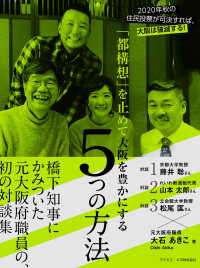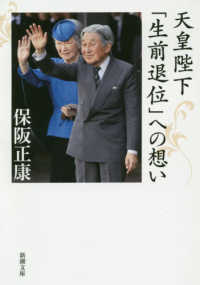- ホーム
- > 洋書
- > ドイツ書
- > Social Sciences, Jurisprudence & Economy
- > Politics, Society, Work
- > social science
Full Description
This book describes the main characteristics that define the emotion of fear, its dimensions, functions, types, and social and individual meanings. It also shows that fear represents a desire to eliminate the Other and that horror films have their origin precisely in crisis and fear, which gives it a fundamentally xenophobic nature. This is demonstrated in the book through the analysis of the four most important versions of the King Kong myth: 1933, 1976, 2005 and 2017. These versions are the result of the fear of the Other that was generated by particular crises in US society: the stock market crash of 1929, the 1970s energy crisis, 9/11 and the military intervention in Iraq in 2003 and its consequences. These conflicts also led to psychological and sociological effects that created a desire for escape that King Kong's films manifest.
Contents
STARTING HYPOTHESIS, OBJECTIVES, THEORETICAL AND METHODOLOGICAL FOUNDATIONS, FUNDAMENTAL CONCEPTS AND STRUCTURE OF THE BOOK — CRISIS, FEAR, AND XENOPHOBIA IN HORROR CINEMA — CRISIS AND FEAR IN KING KONG — NOSTALGIA FOR THE ORIGIN — KING KONG AND THE INTERNAL AND EXTERNAL FEAR OF THE OTHER — FEAR OF THE BLACK RACE — MALE FEAR OF WOMEN — CRISIS, OR WHERE WE COME FROM AND WHERE WE ARE GOING — BIBLIOGRAPHY .








